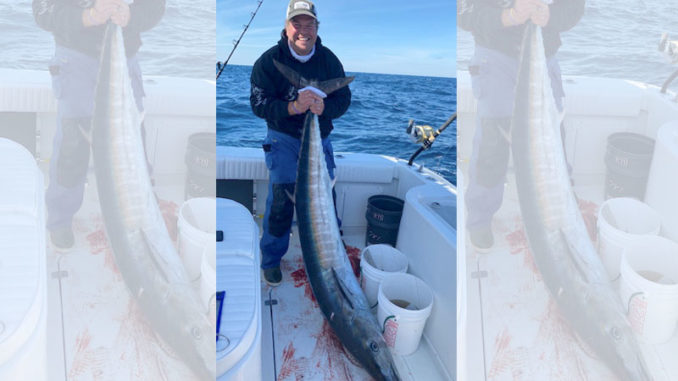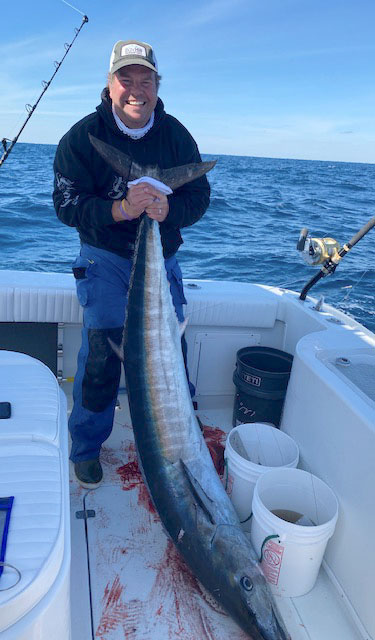
Wahoo lead the early spring bite
Fishermen are already taking advantage of all weather windows to head offshore of Cape Fear, and their odds of scoring big increase as March arrives. The fishing isn’t as consistently good as it will be later, but fish are there to be caught, and wahoo lead the list of possible catches.
These turbocharged cousins of king mackerel move along the temperature breaks of the Gulf Stream all year. Their numbers drop during the winter but begin increasing as the weather and water begins to warm — usually in March.
The Gulf Stream is more than 50 miles from any of the inlets along North Carolina’s southern coast, but a March ride to 30 to 50 fathoms often pays off with an abundance of wahoo fillets, plus occasionally a surprise tuna or dolphin for the fish box — or even a billfish release. Capt. Joe Seegers of the Hooked Up out of Southport, N.C., said wahoo fishing off North Carolina’s coast compares with anywhere in the world.

Clean water is the key
Seegers said finding clean, warm water between 150 and 300 feet of depth will usually produce wahoo off Cape Fear. Several popular spots in this area include the 100/400, Blackjack Hole, Steeples and Same Ole. A warm-water eddy is usually sweeping over at least one of these structures, and it brings in baitfish, which attract the predators.
“I look at the seawater thermals before leaving and head out to one of these structures that is showing 72 to 76 degrees,” Seegers said. “Then, I look for a hard temperature change of 2 degrees or more in a quarter-mile. In a big boat with a fly bridge, you can often see even slight color changes or rips that might signify a temperature break. These are harder to see in an outboard boat, so you should pay more attention to the temperature gauge.
Look for 70+ degree water
“We fast-troll a lot in the fall when almost all the water is warm, but not so much during the winter and spring,” Seegers said. “This time of year, you’re moving through colder water to get to the warmer water, so stay at cruising speed until you reach warm water. Once I find the right water, I set a spread of rigged baits and work the area. The exception would be fast-trolling to move up or down the break and wanting to fish while covering ground.”
Seegers said that clean, blue water is more important than the actual temperature, but you must have water that is noticeably warmer than inshore and usually in the 70s. He also suggested having some mono or fluoro rigs ready to switch out in the event you spot a school of tuna or dolphin. They sometimes bite wire rigs but prefer mono or fluoro leaders.




Be the first to comment